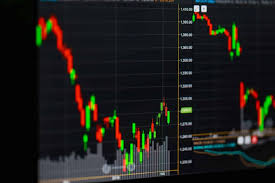
Forex trading online has become significantly popular over the past few years, attracting millions of traders globally. With the advancement of technology, the Forex market is more accessible than ever before. Many platforms, such as forex trading online exbroker-turkiye.com, offer various tools and resources for both new and experienced traders. In this article, we will explore the fundamentals of Forex trading, strategies for success, and the essential tools needed to thrive in this dynamic market.
The foreign exchange market, commonly known as Forex, is the largest and most liquid financial market in the world. It involves the buying and selling of currencies, where traders aim to profit from the fluctuations in currency values. The Forex market operates 24 hours a day, five days a week, making it a truly global market that is accessible from anywhere.
Before diving into trading strategies, it’s essential to understand some key terminology:
Choosing the right Forex trading platform is crucial for your success as a trader. Look for a platform that offers:
There are several strategies that traders employ in the Forex market, each with its unique approach:
Day trading involves making multiple trades within a single day, with the goal of benefiting from small price movements. It requires quick decision-making and a keen understanding of market trends.
Swing trading focuses on capturing price swings over several days to weeks. Traders analyze market patterns and set trades based on expected future movements.
Scalping is a strategy where traders make numerous trades throughout the day, aiming to profit from small price fluctuations. Successful scalpers often rely on high leverage and a quick execution of trades.

Position trading is a longer-term strategy. Traders hold positions for weeks, months, or even years, basing their decisions on fundamental analysis and long-term trends.
Traders often use two primary types of analysis to inform their decisions: technical and fundamental analysis.
Technical analysis involves studying historical price movements and volume to predict future movement. Traders use various indicators and chart patterns to make informed decisions.
Fundamental analysis focuses on economic indicators, news events, and political developments that could impact currency values. This includes interest rates, inflation data, and employment figures.
One of the most critical aspects of Forex trading is risk management. Protecting your capital is essential to long-term success. Here are some strategies:
Creating a well-structured trading plan is essential for any Forex trader. A trading plan outlines your trading goals, risk tolerance, strategy, and evaluation criteria. Key components include:
The Forex market is constantly changing, influenced by global events and market sentiment. Stay informed by:
Forex trading online offers exciting opportunities for those willing to learn and adapt. By understanding the fundamentals of the market, developing a solid trading strategy, and managing risk effectively, you can enhance your chances of success. The Forex market is dynamic and requires dedication and continuous education. Start your trading journey today and explore the vast potential of the Forex market!
by admin on Tue 28th October 2025